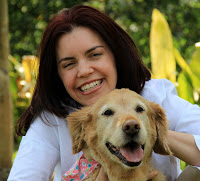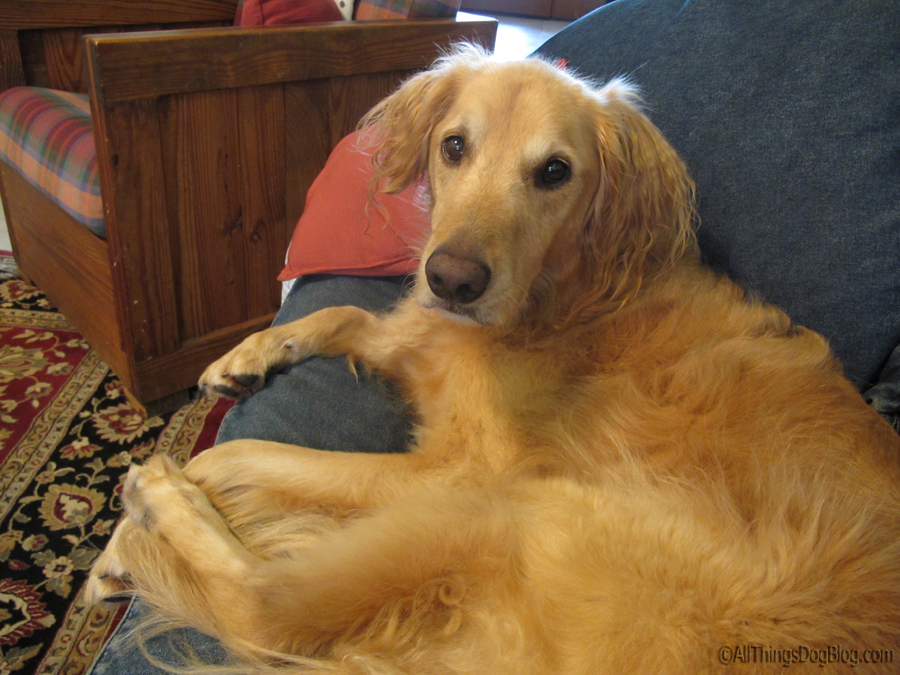Dogs
by Carrie Boyko, CEB








- Ask The Veterinatian About Coprophagia
by Julie Buzby, DVM courtesy Dayland via Flickr.com Looking GuiltyDear Dr. Buzby, How do we get our pups to stop eating their own, or other dogs, poop? Thanks, Lori, ----------------------------------------------------------------------------------...
- Ask The Vet About Nail Care + Posture
by Dr. Julie Buzby, DVM Buffercourtesy ToeGrips.com Nail Care the Right WayDuring 2014, I’ve been contributing posts in a series titled, “Ten Tips for Fido’s Longest Life.” To date, we’ve covered topics such as weight management, dental...
- Dr. Julie Addresses Pet Chiropractic Care
by Dr. Julie Buzby, DVM Time for an Adjustment for Fido? Read on...Prior to beginning my training for certification through the American Veterinary Chiropractic Association (AVCA) in 1998, my only experience with chiropractic was from a distance. ...
- Ask The Vet: Bones As Fido's Dental Care
by Dr. Julie Buzby Buffer courtesy Photonquantique via Flickr.com A Little Help Please Dear Dr. Julie: Thank you for the wonderful tips. Do you have any thoughts on the use of raw beef marrow bones for dental health. I'd like to hear the pros and...
- French Bulldog Breed Standard
General Appearance The French Bulldog has the appearance of an active, intelligent, muscular dog of heavy bone, smooth coat, compactly built, and of medium or small structure. Expression alert, curious, and interested. Any alteration other than removal...
Dogs
Ask the Vet About Dewclaws
by Carrie Boyko, CEB
 |
| You Want a Picture of My What? |
Dear Dr. Julie,
Thank you for providing valuable information on All Things Dog Blog. I would like to understand more about Dewclaws, their purpose, meaning and potential problems:
- Some say that the presence of dewclaws has meaning. Can you shed light on this?
- Do Dewclaws have any usefulness or purpose?
- Are Dewclaws dangerous? Should they be removed? I hear that some are, but do not know why.
Thanks, Ken
--------------------------------------------------------------------------------
Dear Ken,
Great questions, not without controversial answers. I’ve read that the practice of removing dewclaws began 100-150 years ago by German breeders. To this day, some breeders advocate dewclaw removal to create the “clean line” appearance of a straight front leg, in other words, for cosmetic reasons.
I need to explain that there are two different types of dewclaws—commonly called “floppy” and “attached”. Floppy dewclaws usually occur on the hind legs of dogs and are only attached to the leg by skin. These nails are loose and freely moveable, increasing the risk of them snagging on underbrush or carpets. Although some breeds require them for showing, most vets (including me) recommend removal of floppy hind dewclaws at time of spay or neuter (if it wasn’t done at 2-5 days of age).
| A Healthy Dewclaw Nice and Short |
Attached dewclaws, by contrast, are typically present on dogs’ forelimbs and are connected to the leg by bone. I never recommend routine removal of “attached” dewclaws.
Why? Dewclaws do have purpose. My dog uses his daily when “holding” a rubber bone to gnaw. Anatomically, dewclaws are equivalent to our thumbs. More significantly, there is growing evidence that front dewclaws help stabilize the leg and prevent torque on the main joint near these dewclaws, called the carpus (which is equivalent to our wrist, or a horse’s knee). The forces applied to the carpal joint are most pronounced in canine athletes, for example lure coursing greyhounds, agility dogs threading through weave poles, and flyball dogs making sharp turns at a gallop.
However this notion of the dewclaws contributing to carpal stabilization is controversial. Many orthopedic surgeons deny a connection, but others admit that dewclaw removal does seem to increase the incidence of arthritis development in the dog’s “wrist”. One study showed that cutting a tendon in the leg that attaches to the dewclaw did produce degenerative joint disease in the carpus, supporting the connection between dewclaws and stabilization of the dog’s “wrist”. To summarize, there is no documented proof that removing the front dewclaws of dogs as a routine procedure results in any benefit, but there may be evidence of the opposite.
Finally, please remember how important it is to provide routine nail care for your dog. Forgotten dewclaws can grow around in a curl and embed into the dog’s skin.
Every day I go to work I see patients with problems resulting from long nails. Here’s more information on trimming yourdog’s nails, which includes a video tutorial.
Dr. Julie Buzby is a homeschooling mom of seven, American Veterinary Chiropractic Association and International Veterinary Acupuncture Society certified holistic veterinarian, and passionate advocate for canine mobility.In her free time she serves on the Advisory Board for The Grey Muzzle Organization. She can be found at Twitter @DrBuzby and on Facebook.com/ToeGrips. You'll also find more of Dr. Julie's posts at our Ask the Vet Archives page.
You may also enjoy reading her recent articles:
You may also enjoy reading her recent articles:
- 10 Tips for Fido's Longest Life
- Insight on Friendship Changes
- Leaner Pets Live Longer
- Finicky Eaters
- Tweaking Your Dog's Vaccinations
Dr. Julie's opinion or advice does not replace an actual exam with a veterinarian.







- Ask The Veterinatian About Coprophagia
by Julie Buzby, DVM courtesy Dayland via Flickr.com Looking GuiltyDear Dr. Buzby, How do we get our pups to stop eating their own, or other dogs, poop? Thanks, Lori, ----------------------------------------------------------------------------------...
- Ask The Vet About Nail Care + Posture
by Dr. Julie Buzby, DVM Buffercourtesy ToeGrips.com Nail Care the Right WayDuring 2014, I’ve been contributing posts in a series titled, “Ten Tips for Fido’s Longest Life.” To date, we’ve covered topics such as weight management, dental...
- Dr. Julie Addresses Pet Chiropractic Care
by Dr. Julie Buzby, DVM Time for an Adjustment for Fido? Read on...Prior to beginning my training for certification through the American Veterinary Chiropractic Association (AVCA) in 1998, my only experience with chiropractic was from a distance. ...
- Ask The Vet: Bones As Fido's Dental Care
by Dr. Julie Buzby Buffer courtesy Photonquantique via Flickr.com A Little Help Please Dear Dr. Julie: Thank you for the wonderful tips. Do you have any thoughts on the use of raw beef marrow bones for dental health. I'd like to hear the pros and...
- French Bulldog Breed Standard
General Appearance The French Bulldog has the appearance of an active, intelligent, muscular dog of heavy bone, smooth coat, compactly built, and of medium or small structure. Expression alert, curious, and interested. Any alteration other than removal...
